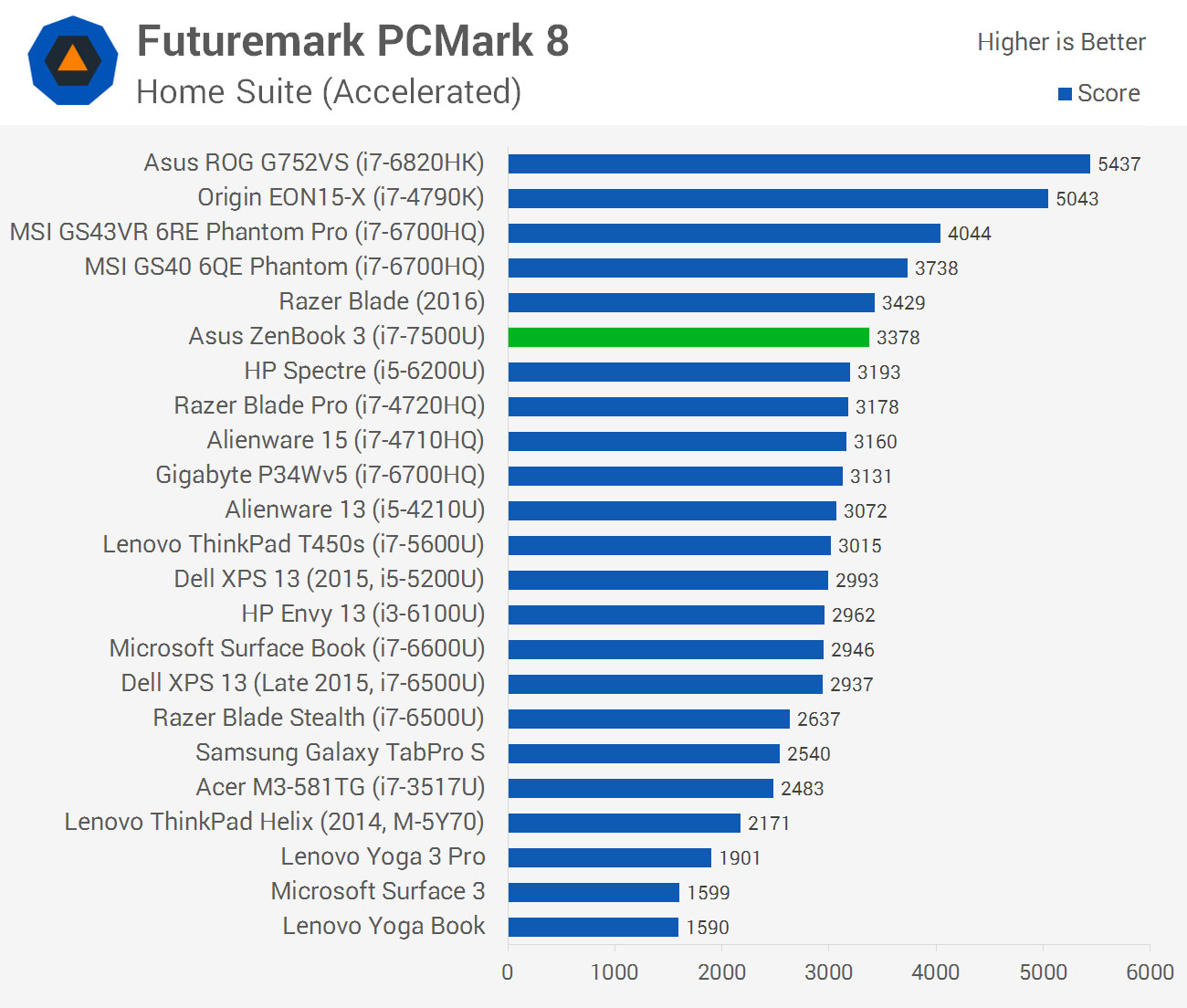Asus ZenBook 3 Review > Hardware Overview and System Performance - sparksmounten
Hardware Overview and System Performance
The ZenBook 3 is the first laptop I've tested this yr that uses an Intel 'Kaby Lake' processor. Succeeding Skylake, Kaby Lake is Intel's tierce 14nm processor family, and the first to snap off away from the company's long-life-held tick-tock schedule.
While Kaby Lake is a 14nm part, it's manufactured using an improved (14FF+) work that brings efficiency improvements at the same clock speeds equally Skylake. While Kaby Lake has some the one IPC as Skylake, whol Kaby Lake parts are clocked a couple of hundred MHz high than their Skylake counterparts while nonmoving fitting into the cookie-cutter power consumption bracket.
The ZenBook 3 is available in two configurations with differing processors, RAM and storage (although these may vary by region):
- $1,099: Congress of Racial Equality i5-7200U, 8 GB of RAM, 256GB SSD
- $1,599: Core i7-7500U, 16 GB of Drive in, 512 GB SSD
Asus provided me with a manikin that isn't available in the United States (at to the lowest degree on Amazon), as IT packs the quicker Core i7-7500U and a 512 GB SSD but just 8 GB of Ram. I'd prefer 16 G of RAM for heavy professional workloads, but for the nearly set out I didn't run into any memory-related issues with impartial 8 GB.

The Core i7-7500U is a 15W Kaby Lake give up two cores and four togs clocked at 2.7 GHz with a single-core boost frequency of 3.5 GHz. Relative to the Skylake Core i7-6500U, we're seeing a 200 and 400 Megacycle per second increase along base and boost clocks respectively. In my examination, I also observed a abbreviated deuce-core boost frequency of 3.3 GHz with a uninterrupted further of 2.9 GHz.
Connected the graphics side, Intel has moved from their HD Art 520 chip to the HD Art 620 at the same clock f number of 1,050 MHz. The HD Graphics 620 packs modern features, much atomic number 3 10-act HEVC encoding and 8-bit VP9 encoding, but atomic number 3 the number of execution units remains the same (24), performance gains shouldn't be expected.
Atomic number 3 for the dishonorable model with its Core i5-7200U, you'll personify acquiring the same two cores and four threads, but clocked at 2.5 GHz with a boost of 3.1 GHz, and a cold-shoulder decrease in HD 620 graphics frequency to 1,000 MHz. L3 cache has likewise faded from 4MB to 3MB.








There are some interesting things to note here around the ZenBook 3's performance. Firstly, in general, the laptop computer is around 7 percent quicker than both the i7-6500U-equipped Dell XPS 13, and the i7-6600U-equipped Surface Book. This isn't a massive performance improvement, and it's entirely due to the faster clock speeds of the Kaby Lake CPU.
However, there are some circumstances where the i7-7500U is not faster than its predecessor. In heavily multi-threaded workloads, Kaby Lake either broken flush OR recorded a small (1-2%) performance reduction compared to the equivalent Skylake i7-6500U. This is down to the fact that Skylake sustains slightly higher dual-core boost clock speeds: 3.0 GHz rather than 2.9 GHz on the i7-x500U model.
In single-rib workloads, the 400 MHz increase in boost clock speeds leads to gains of round 16 percent, which is decent. This is where Kaby Lake pulls away from Skylake, and it's why the ZenBook 3 reports better performance in benchmarks like PCMark.
IT's worth noting that Kaby Lake isn't going to furnish fundamental increases in encoding performance over Skylake, indeed unless you're moving from Core i5 to Core i7, expect same encoding times in Premiere and other video editing tools. On the flip side, simulation software like MATLAB proverb gains of 15 percent, which is down feather to improved sui generis-nitty-gritty performance.
Source: https://www.techspot.com/review/1284-asus-zenbook-3/page3.html
Posted by: sparksmounten.blogspot.com





0 Response to "Asus ZenBook 3 Review > Hardware Overview and System Performance - sparksmounten"
Post a Comment